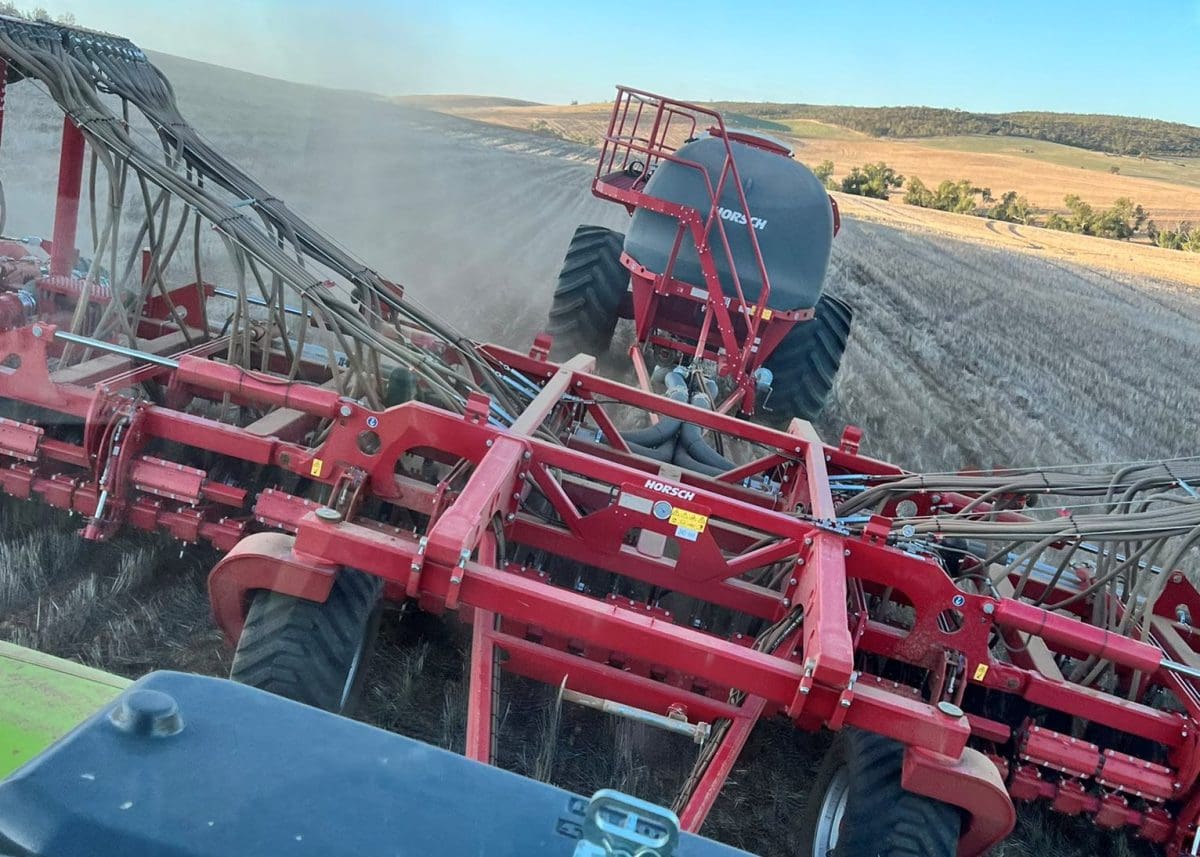
Planting of winter crop in WA is well advanced. Photo: Amery Drage, Northampton
THE Western Australian grainbelt is off to a very good start, with most regions having reserves of sub-soil moisture from autumn rains, the Grain Industry Association of Western Australia (GIWA) said in its May Crop Report.
Released today, the report said widespread rain over the past 24 hours or so has provided a top-up that could not have been timed better.
“The timing of the break has been perfect, settling the dust and halting the run of hot days,” GIWA stated.
“Crops will bounce out of the ground, and those to be sown will go into moisture.”
GIWA said early rains have provided an opportunity for large areas of canola to be sown, with canola plantings increasing again over the record area sown in 2021.
“More than half of the total canola plantings for Australia will be in WA again this year.
“The recent rain will alleviate the moisture stress those early plantings were suffering from, even up patchy emergence, and allow those paddocks that were sown dry to now germinate.”
WA last year planted a record winter-crop area of 9.2 million hectares, and this yielded a record
tonnage which GIWA earlier estimated at 24 million tonnes.
GIWA said the strong start to the season means the area now being planted is not likely to drop back to more recent historical levels.
“This will not be the case now, as the early start and strong prices for canola and cereals mean total crop area will be up around that 9-million-hectare mark again this year.”

Table 1: Estimates by cropping zone for WA’s major winter crops. Source: GIWA
Up to 70 per cent of the states’ crop was in the ground before the recent rain, and with falls of 20 millimetres plus for all areas except the low-rainfall eastern regions and parts of the Esperance zone, GIWA said the remainder of the crop will be in the ground and up by the end of May or early June.
“Strengthening grain prices timed with this recent rainfall is likely to see even more crop planted than is
estimated in this report.
“Apart from the noticeable increase in canola area, wheat and barley area is likely to remain unchanged
from 2021.
“Lupin and pulse area is going to be down slightly, and oats also down slightly being replaced by canola.”
Source: GIWA
Further detail on crop conditions in individual WA port zones can be found on the GIWA website.



HAVE YOUR SAY